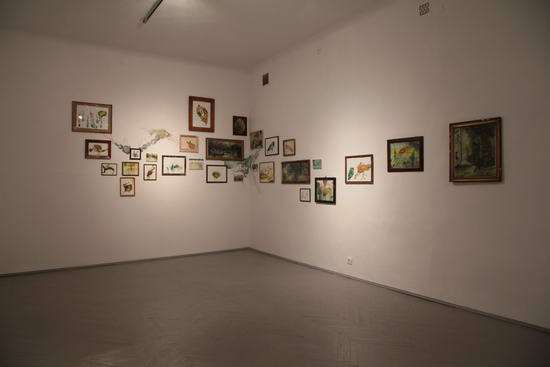MAGDALENA FRANCZAK Blow Up
Opening: 21.09.2012, opening hour: 18.00
Open until: 11.10.2012

The story proposed by Magdalena Franczak is an emotional but humble story of winning nature. The artists understands nature as something that cannot be comprehended or stopped, something primeval, overwhelming; something of unfinished construction, because it undergoes changes in the constant process of rising and falling.
It is difficult to comprehend it especially as, according to R. M. Rilke “the ordinary man, who lives among people and sees nature only in the dimension in which it concerns him, rarely notices the mysterious and extraordinary relation. They don’t see beyond the surface of things (…)”. Acknowledging the instrumental character of human-nature relationship, but, at the same time, sensing how close to the natural world we live (perhaps because of the similar ‘power of creation’) the artist tries not to copy nature, but recognize its relations with humans, define the common ground.
To achieve that M. Franczak ‘grew’ her own world with the use of processes which she intuitively modelled on nature. For her it is an alternative world, but is it the world which brings back what is usually denied or omitted by art. For centuries “domesticating with the eyes”, naming and “constructing beautiful nature” is nothing more than “controlling the fear of nature”, because “the aesthetic helps us escape from the chthonian.” Franczak does not feel fear, though. What she feels is fascination and admiration. She does not correct nature, but she is trying to immerse herself in the stickiness of nature, which is everywhere, which is in us as well. The artist writes: “nature crawls out of corners. It grows like hair.” Changing the arrangement in the nature-art relation several times the artist modifies the aesthetic strategy of perceiving nature through paintings and shaping its ‘painting’ interpretations. In exchange she attempts to present the reality, show what we are running from. The recycled prints with the motif of landscape were repainted in such a way that their first construction was hidden deep inside and our every look leads to the place filled with disorder and chaos, place where one will not find the “picturesque nature” of the landscape. Therefore, from the perspective of aesthetics the paintings became unclear, disturbing, and from the perspective of nature they finally begun exposing its true wealth. We might say that we are watching live transformation, which turns a painting into force of nature. (….)
Małgorzata Jankowska








